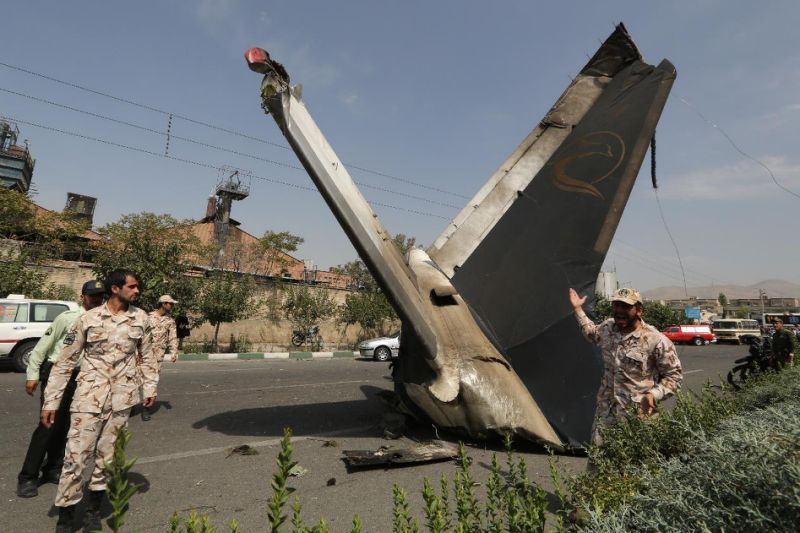February 26, 2021
The government is warning Iranians not to drop their guard against the coronavirus as the country now faces a fourth wave of the disease.
And the daily count of new cases has begun to rise again. After a high of 14,051 on November 27, it fell to 5,806 on January 18, but then started rising gain, passing 7,000 February 4 and 8,000 February 16 on its way up again.
The death toll has not, however, mounted again. It has been below 100 every day since January 8.
To fight the surge, the police announced a travel ban February 25 on four provinces, two islands and five cities most impacted by rising infections.
The traffic police said travel is banned into and out of the provinces of Khuzestan in the southwest and Gilan, Mazan-daran and Golestan, the three provinces on the Caspian Sea. Travel into and out of the cities of Mashhad, Shiraz, Esfahan, Bushehr and Bandar Abbas and the islands of Kish and Qeshm is also banned.
A new concern is the arrival of new variants of the disease. The authorities said February 24 that 112 people had been detected with variants so far, eight of whom have died. The symptoms of the variants are the same as the original coronavirus, but they are more contagious and appear to be more life threatening.
The epidemic has surged again in Iraq, especially in its southern provinces, so Iran and Iraq both closed five border crossings in the south February 19 to tourist crossings, although cargo traffic continues. The daily case reports of the disease had doubled in Iraq in the previous week. The new measures include a fine of 25,000 dinars ($17) for those failing to wear a mask.
The biggest surge of the disease in Iran has been in Khuzestan province, on the border with Iraq. Late in January, Iran had rated no cities any longer as red, meaning the disease was out of control. But on February 17, the Health Ministry tabbed nine cities all in Khuzestan as red.
Health officials have long stressed that the major super-spreader events are family get-togethers as well as weddings and mourning ceremonies, which the regime has long discouraged, mainly by closing all the reception halls where weddings and mourning events are commonly held.
But weddings and mourning ceremonies are still being held in large numbers. In Hormuzgan province on the Persian Gulf coast, three grooms spent their honeymoons and lots more—in jail as they were sentenced to a year in prison for defying the bans, reported Dr. Fatemeh Noruzian, spokeswoman for Hormuzgan University. The brides were not charged.
Health Minister Saeed Namaki warned the public to avoid mass gatherings so as “not to turn weddings into funerals.”
Health officials began issuing warnings about a possible fourth surge late in January, but it wasn’t until mid-February when the new red cities were declared that the public began to take notice. Against the advice of health professionals, the government had begun to ease up on restrictions in January, allowing movie theaters and public swimming pools to reopen, for example.
Dr. Minoo Mohrez, who helped develop Iran’s first vaccine and has become something of a Doctor Anthony Fauci in Iran, was among the first to warn of a new surge of the disease on January 27. She said, “Every time the virus subsides, the public assumes it’s over and leaves home to travel.”
Health Minister Namaki announced the day Mohrez spoke out that the observance of health measures in Tehran province had been halved from 81 percent to 39 percent though how such a precise measure is made remains a mystery.
The death toll includes two former soccer players on the national team two decades ago Mehrdad Minavand, 45, and Ali Ansarian, 43. They had both played professionally for the Persepolis football club.
Much news attention was also given to the death of Mahshid Gudarz, a young married nurse who worked at Tehran’s Loqman Hospital. She was pregnant when she died and the fetus did not survive her.
The government has been boasting for months of how it has revved up production of equipment needed to fight the epidemic and has not only become self-sufficient but is even exporting medical equipment. However, in February the World Health Organization (WHO) issued a news release which received no coverage in Iran saying that WHO is in the process of providing the Islamic Republic with $50 million worth of equipment. It said the aid includes “a total of 316 medical devices, including CT scanners, ultrasound machines, portable digital x-ray machines, as well as 136 diagnostic laboratory devices and their consumables.” The equipment is going to 136 hospitals and 43 medical labs across the country, WHO said.
Maj. Gen. Hassan Salami, commander of the Pasdaran, meanwhile, attributed the drop in the daily death toll to double digits to the Pasdaran’s campaign of sending troops door-to-door to screen the populace. He called that a “miraculous” outcome.
















